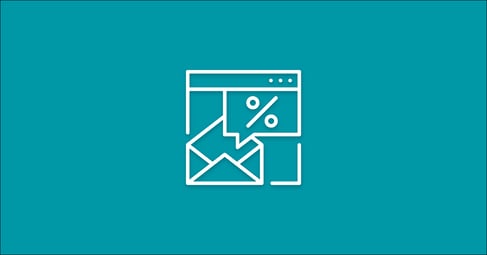Written By:
Tim Stobierski
A Customer Relationship Management program (CRM) is a powerful tool. It keeps information about customers centralized and allows for all sorts of automation, which can severely increase your odds of closing a sale.
Beyond that, CRMs can be really powerful in filling the gaps that are in your pipeline from month to month, ultimately helping to smooth out your revenue fluctuations and allowing your sales team to stay on top of company targets. If you’re trying to decide whether or not a CRM is something that your company needs, here’s a look at some of the top ways that CRMs can improve your company’s sales pipeline.
1. Easier Forecasting
If you want a pipeline that is profitable and achievable, you need to first focus on accurately forecasting your future needs and (realistic) sales goals. To do this, you need to know your numbers: average number of leads created per month, conversion rate of leads to opportunities, conversion rate of opportunities to customers, average revenue per sale, etc., so that you know around how many leads your sales team needs to contact to hit their goals.
CRMs make it easy to track this information automatically, ensuring that your targets are accurate. In addition to keeping these numbers on hand, they can also offer you helpful insights into what your Sales and Marketing teams could be doing differently in order to be more effective. If, say, your conversion rate of opportunities to customers is exceptionally low, maybe there is something in the final sales pitch that you should be doing differently to boost that number. Or if the conversion rate of leads to opportunities is scant, maybe Marketing isn’t hitting on the right topics or creating the right content.
Success in marketing and sales always falls back on analysis—seeing what works and what doesn’t—so that you can improve upon your methods. CRMs can help.
2. Client Management
Managing a diverse amount of information about your various leads, opportunities, and customers can be exhausting if you don’t have a centralized database to store it. But keeping this information organized is essential if you want to effectively close sales. You need a way to evaluate leads, store information about their needs and interests, and keep track of your points of contact if you want to sell as much as possible.
CRMs make this process a lot easier than simply relying on spreadsheets, notes, and various documents scattered about on your desktop. And because they usually integrate with things like social media that you use for research, CRMs make it especially easy to keep up with social selling.
One of the most important benefits here, though, is the ability to seamlessly transfer leads from Marketing to Sales, and from one salesperson to another. If Marketing has a hot lead, or one salesperson has a hot lead that they don’t have time to pursue, they can let someone know to check the CRM for data and reach out, as opposed to manually updating them via conversation or email.
3. Automation Streamlines Follow Up
A big part of the sales process is busy work: things like nurturing a lead along the path from prospect to customer. Being able to automate this busy work saves salespeople time and energy that can be put towards other, more profitable activities—like actually selling.
Think about the amount of time that you spend on things like sending follow-up emails and other various touchpoints. Instead of doing this manually, CRMs allow you to automate the process in ways that substantially boost your efficiency. Automated email campaigns, for example, when partnered with online forms, calls to action, etc., can easily weed the sales qualified leads out from the rest and ultimately fill your pipeline automatically so that you always have a source of leads to reach out to if things get slow.
4. Tracking Urgency
Sales is all about timing. You need to reach out to the right person at the right time if you want to increase your chances of closing sales. But this is hard to do if you’re simply cold-calling leads from a list: You have no way of knowing who is more likely to buy.
Many CRMs help you track the urgency in which you should try and contact certain leads. They give priority to leads that are expected to buy more quickly—say, those who have visited your site multiple times or who have responded well to various content offers and calls to action—and if you target these leads above others, it can have a big impact on your pipeline. It’s much easier to hit your targets if you prioritize the high-quality leads over everyone else.
5. Put the Power in the Customer’s Hands
The sales process has changed dramatically in the last couple of decades, with more and more power shifting from the salesperson to the customer. This is often seen as a bad thing, but it can also be very freeing for the salesperson. Instead of blindly pursuing leads who may or may not be open to buying, this allows salespeople to focus on the ones who are more likely to make a purchase.
This tendency also cuts out a lot of the busy work that comes with pursuing leads. For example, when you have a customer who wants to learn more about your product or services, there’s usually a lot of back and forth that happens to set up a time to talk.
CRMs like Hubspot can help in this arena by putting the power in the hands of the consumer. Features like embeddable meetings and messages on your website let customers schedule time to talk by directly integrating with your personal calendar. This allows the customer to choose a day and time that works. Think of all the emails that this can cut out, and how much time this adds back into your day—more time to sell, which means you are more likely to reach your targets.
Wouldn’t it be great to log into your calendar in the morning knowing you have a day already booked with calls, knowing that you don’t need to blindly pursue leads that may or may not want to be contacted?
Smarter Selling
CRMs are all about making the selling process smarter. By removing busy work and redundancies, keeping data and customer information centralized, and tracking urgency, they make it easier for you to fill your pipeline and ultimately reach your sales targets. It’s all about selling smarter, instead of selling harder.





